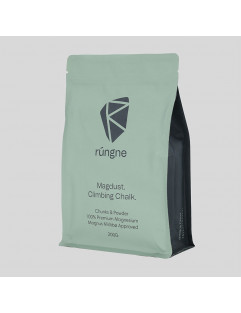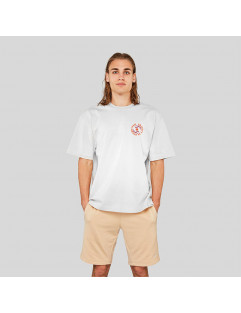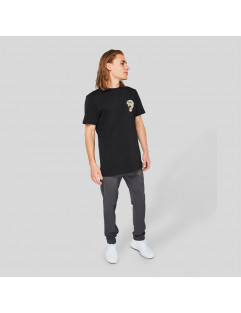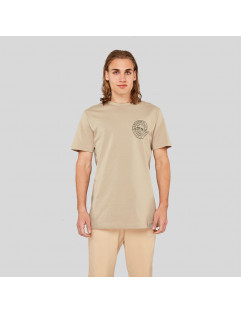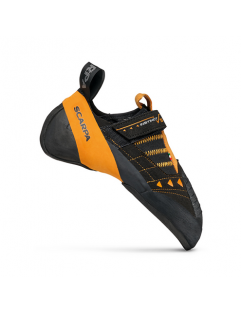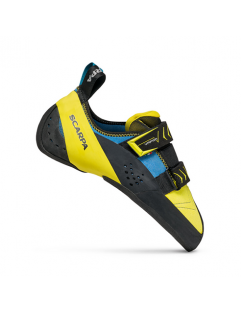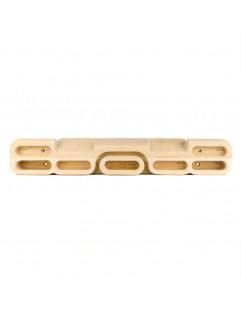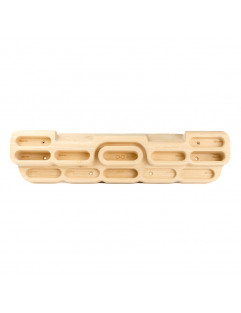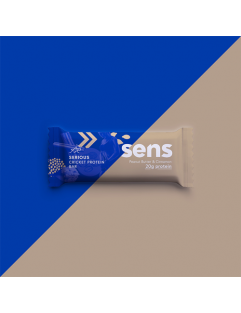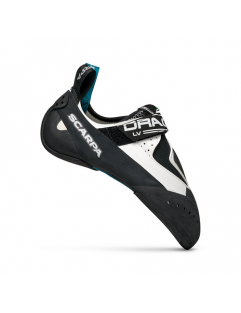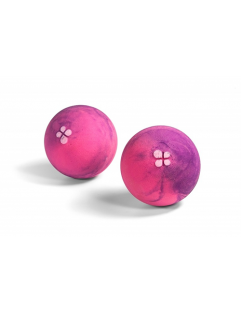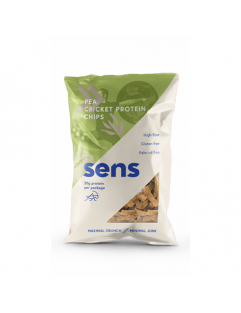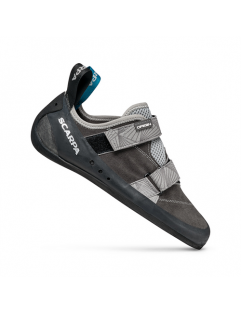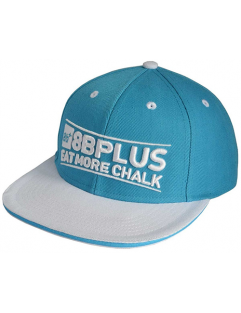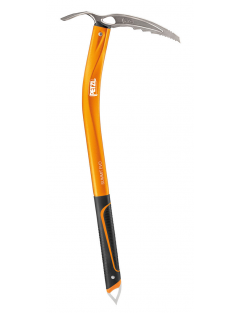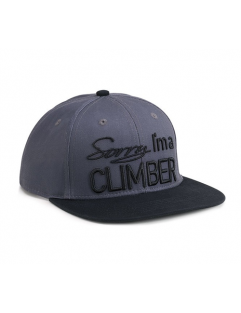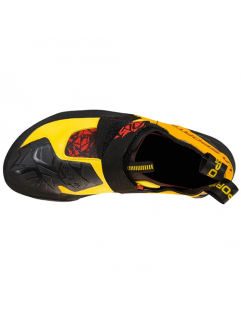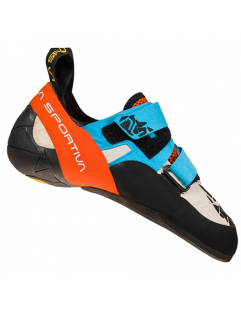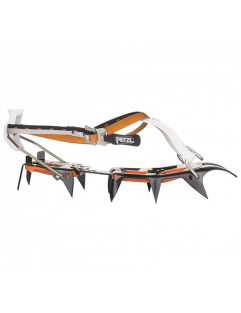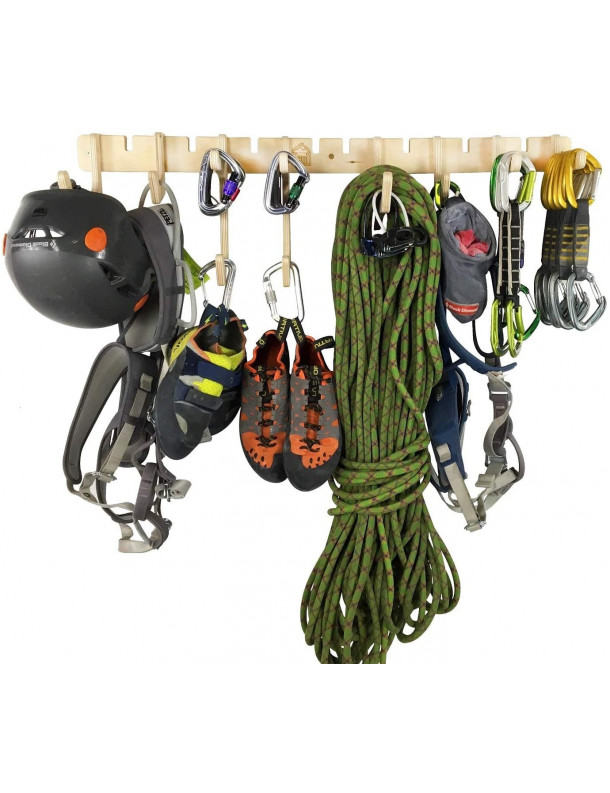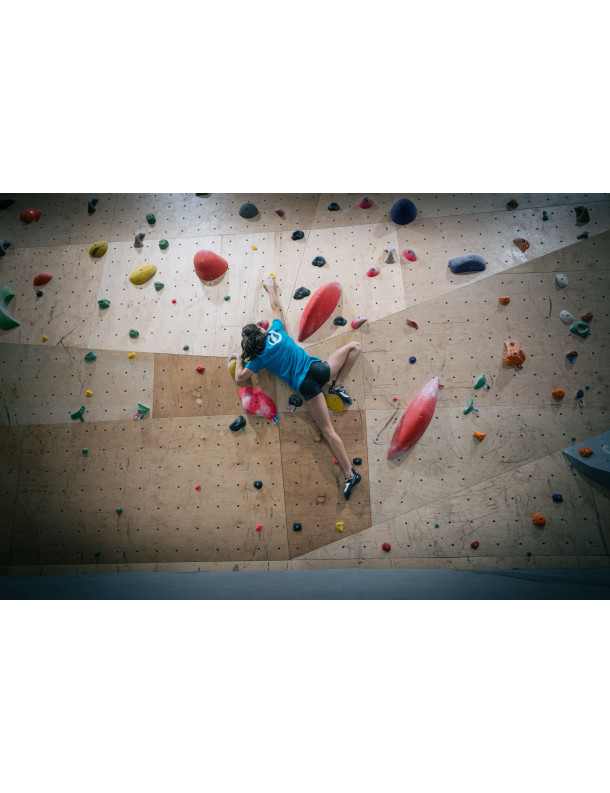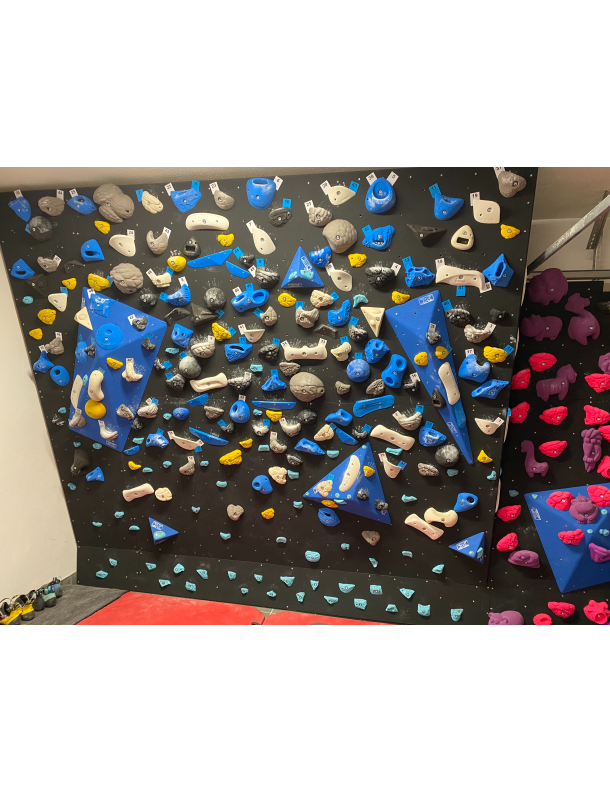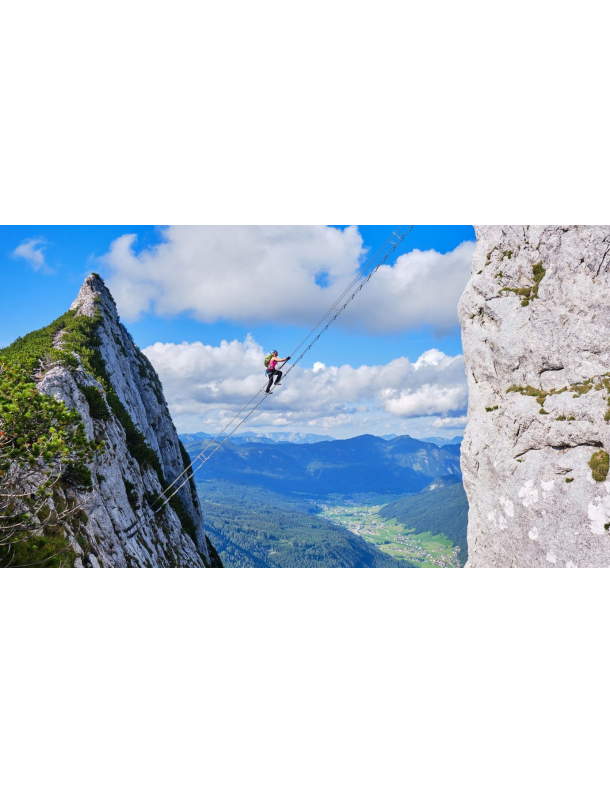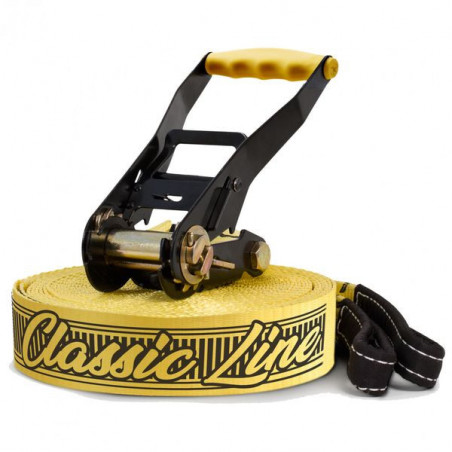New products
velcro-shoes
Scarpa -...The Scarpa Instinct is your friend during sport climbing and bouldering. It is a perfect weapon both indoor and outdoor. This climbing shoe can...
€89.98
Regular price
-50%
€179.95
Price
velcro-shoes
Scarpa - Vapor...A precise, versatile and best-selling shoe that combines a comfortable fit with steep climbing performance, the redesigned Vapor V features fresh...
€84.98
Regular price
-50%
€169.95
Price
fingerboards
YY Vertical -...The Verticalboard Light was designed for climbers looking for an essential and accessible training tool. It offers the climbing training classics:...
€69.95
Price
fingerboards
YY Vertical -...The VerticalBoard First is suitable for adept climbers wanting to become stronger to complete their projects. It offers a variety of different...
€89.95
Price
Active filters
nutrition
Sens - Serious Cricket Protein Bar - Peanut Butter &...Sens - Serious Cricket Protein Bar Peanut & Cinnamon
Sens uses cricket protein because it...
€2.95
Price
low-volumes-shoes
Scarpa - Drago LV - White - Climbing ShoesScarpa - Drago LV
Looking to maintain all the winning aspects of the world cup winning Drago,...
€169.95
Price
outlet
Lapis - Rollyballs XLAnother pioneering product from LapisTM are the RollyballsTM. The spherical shape of the product...
€59.98
Regular price
-50%
€119.95
Price
nutrition
Sens - Cricket Protein Chips - Poppy Seeds & Sea Salt - 80 gSens - Cricket Protein Pea Chips
Sens uses cricket protein because it provides the same...
€2.95
Price
velcro-shoes
Scarpa - Origin - Covey/Black - Climbing Shoes
The 2020 Scarpa Origin is the new version of our bestselling beginner model. Slight change in...
€109.95
Price
headwear
8b+ - Eat More Chalk turquoise - CapSolid, extremely good looking Caps with a huge 3D embroidery. Pride, fun and rock climbing. Be...
€29.95
Price
ice-axes
Petzl - Summit Evo - Mountaineering Ice Axe
Technical performance ice axe for classic mountaineering
Designed for classic mountaineering,...
€169.95
Price
headwear
8b+ - Sorry I'm a Climber Black - CapACTUALLY, DON’T BE SORRYDouble black, like our coffe in the morning when heading out to the crag...
€29.95
Price
velcro-shoes
La Sportiva - Skwama - Black/Yellow - Climbing Shoes
A sensitive, snug fitting, soft climbing shoe designed for maximal performance both on rock and...
€159.95
Price
velcro-shoes
La Sportiva - Otaki - Blue/Flame - Climbing Shoes
A great performance climbing shoe by Sportiva. Providing precision, support and structure....
€169.95
Price
crampons
Petzl - Vasak - Leverlock Universel - Mountaineering...The Vasak crampons are ideal for classic mountaineering! Equipped with 12 points, the Vasak...
€169.95
Price
france
Bart van Raaij - 5+6 Part 1 - Fontainebleau - Bouldering...The 5+6 Part 1 Fontainbleau topo. It describes 4862 problems from 5a to 6c+. This is 100% a...
€35.95
Price
Home
Subcategories
-
Activities
-
Footwear
<p>Choosing climbing shoes is no easy activity. Unless you are an experienced climber you will most likely want some advice when trying them on. </p> <p>When it comes to choosing your climbing / bouldering shoes there are two main criteria to look out for, <strong>comfort</strong> and <strong>functionality</strong>.These two are not correlated, meaning that if you want your shoe to be a bit more comfortable and less tight, you will most likely pay the price in functionality and the other way around.</p> <p><img src="https://www.caspersclimbingshop.com/img/cms/velcro%20shoes%20final.jpg" alt="" width="189" height="197" /></p> <p>Furthermore, climbing shoes will expand with use and wear, especially the leather shoes can change their shape and size quiet a bit, which is why, if you want performance, it makes sense to initially buy these pairs pretty tight. Synthetic shoes on the other hand will not loosen as much. This covers the aspect of comfort, optimized functionality is usually achieved as long as the shoe is snug fitting around the heel and as long as the big toe touches the tip of the toe cap. Anything else, like shape, material, closing system etc has it's advantages and disadvantages and is up to the climbers preferences and climbing needs.</p> <p>The choices are endless and difficult today so contact our Customer Service or send us a mail to help you choose the right product for your needs. </p> <p></p> <p>Shop online.........more time to climb.</p> <p></p> <p>Casper's Supports Your Summit</p> -
Clothing
<p>When it comes to climbing clothes it is sometimes hard to distinguish between specific equipment and everyday clothes. The climbing specific clothes are adapted to the relevant outdoor / indoor conditions, meaning that very specific fabrics are used to protect and/or adapt to the elements, cuts are made in a certain way to provide good freedom of movement and in general these clothes are quiet comfortable to wear and made of an eco friendly material. </p> <p>Firstly, you need to think of the purpose of your clothes. Someone buying a jacket to keep him/her warm between boulders in fontainebleau on fresher days does not require the same jacket as someone going on an alpine excursion in the high mountains. The materials and functionality can vary quiet a lot, do you want it to keep you warm or should it be breathable, should it be water resistant, comfort vs utility, are pockets important, how many layers will you wear and, and, and.. the list goes on. In order to be ready for most situations it can be useful to have a basic set of different clothes available and just combine them as needed.</p> <p>In climbing we can still differentiate between bouldering clothes, sport climbing clothes and outdoor clothes (for alpine climbers/ice climbers). For the indoor climber, be it bouldering or sport climbing, the main criteria that should be met is excellent freedom of movement and good robust quality. When going outside, these previous points still need to be met, but also a good moisture management is needed, and depending on the conditions the clothes need to keep you warm or let you cool off. For alpine climbers the clothes have to meet a few more criteria in order to properly protect from the five elements. For via ferrata enthusiasts, specific gloves are also recommended to protect the hands on the wire cables and ladders. </p> <p> </p> <p>The choices are endless and difficult today so contact our <a href="/contact-us">Customer Service</a> or <a href="mailto:info@caspersclimbingshop.com">send us a mail</a> to help you choose the right product for your needs. </p> <p></p> <p>Shop online.........more time to climb.</p> <p></p> <p>Casper's Supports Your Summit</p> <p></p> -
Climbing Equipment
<h1>Lets go climbing…………..what do you need to do this?</h1> <p>There is no fix list of things you need to go climbing. Back in the days they almost had no gear but of course this has changed. Today the choice of brands and models are endless, it has become a gear freak’s paradise. We at Casper’s Climbing Shop feel that climbing can be divided in to four categories: Bouldering, Sport Climbing, Mountaineering and Via Ferrata.</p> <p>Boulderers can generally get by with climbing shoes, chalk, chalkbag and a crashpad.</p> <p>Sport climbers need to add a harness, rope, quickdraws, carabiners, belay device, climbing helmet and maybe other items e.g. a few cams or nuts. </p> <p>Mountaineers need a lot of different products even for the easiest routes and here the choice is endless. It can range from crampons and ice axe to the right clothing and bivouac equipment.</p> <p>Via Ferrata is often under estimated as it seems easy and a perfect activity for a family holiday. Here there is also a large choice of products which will make your trip safer and more fun.</p> <p><span>Whether you are planning a relaxing bouldering holiday or a challenging tour in mountain terrain you will find the right climbing gear for every purpose, every level and every budget in our climbing shop. W</span>e started with only a few brands to which more have been added over time. A list of some of our brands include: E9, Petzl, Black Diamond, La Sportiva, Edelrid, Five Ten, Evolv, Metolius, Wild Country, Moon Climbing, Sterling Rope, Beal, Scarpa and many more.</p> <p><img src="https://www.caspersclimbingshop.com/img/cms/gear.jpg" alt="" width="400" height="352" /></p> <p>The choices are endless and difficult today so contact our <a href="/contact-us">Customer Service</a> or <a href="mailto:info@caspersclimbingshop.com">send us a mail</a> to help you choose the right product for your needs. </p> <p></p> <p>Shop online.........more time to climb.</p> <p></p> <p>Casper's Supports Your Summit</p> -
Bouldering
<h1>Lets go boulder…………..what do you need to do this?</h1> <p>There is no fix list of things you need to go climbing. Back in the days they almost had no gear but of course this has changed. Today the choice of brands and models are endless, it has become a gear freak’s paradise. We at Casper’s Climbing Shop feel that climbing can be divided in to four categories: Bouldering, Sport Climbing, Mountaineering and Via Ferrata.</p> <p>Boulderers can generally get by with climbing shoes, chalk, chalkbag and a crashpad.</p> <p>Sport climbers need to add a harness, rope, quickdraws, carabiners, belay device, climbing helmet and maybe other items e.g. a few cams or nuts. </p> <p>Mountaineers need a lot of different products even for the easiest routes and here the choice is endless. It can range from crampons and ice axe to the right clothing and bivouac equipment.</p> <p>Via Ferrata is often under estimated as it seems easy and a perfect activity for a family holiday. Here there is also a large choice of products which will make your trip safer and more fun.</p> <p>Whether you are planning a relaxing bouldering holiday or a challenging tour in mountain terrain you will find the right climbing gear for every purpose, every level and every budget in our climbing shop. We started with only a few brands to which more have been added over time. A list of some of our brands include: E9, Petzl, Black Diamond, La Sportiva, Edelrid, Five Ten, Evolv, Metolius, Wild Country, Moon Climbing, Sterling Rope, Beal, Scarpa and many more.</p> <h2>Bouldering gear</h2> <p>As previously mentioned a boulderer doesn't need much equipment, barely any, which is why bouldering is considered by some people to be the purest form of climbing. It's the isolation of single hard moves that makes it ideal to work on hard sequences or on personal weaknesses. There's just you vs the rock, no rope keeping you safe, no clipps holding you on the wall, just you, your shoes fingers and pad. Others see bouldering as a training method towards rope climbing but it has established itself as a completely independent discipline and a unique set of equipment has emerged accordingly. </p> <p><img src="https://caspersclimbingshop.com/img/cms/velcro%20shoes%20final.jpg" alt="" width="168" height="175" />The probably most important piece of gear in bouldering are the shoes. The way bouldering developed and transformed itself to become this insane sport it is now requires very specific equipment, and the shoes help you use your feet as hands. Hard rubber vs soft rubber, asymmetric vs straight, with/without support, laces vs velcro, Vibram edge vs grip etc. These are all aspects that play a massive role in your bouldering game. They should fit perfectly, offer good grip and allow a good feel for the rock. </p> <p>The next most important thing when bouldering is the crash pad because after all it's what prevents impact with the ground in case of a fall. There are lots of different style pads out there, size matters, material and shockabsoarb system, carry system, thickness etc. Depending on where you go bouldering you will need to watch out for different features that could make your trip a lot more comfortable.</p> <p>Finally, you will need some chalk to complete your boulder kit. Any boulder chalk bag will do the job.</p> -
Training
<h1><span style="text-decoration:underline;"><strong>Climbing specific training </strong></span></h1> <p>Climbing specific training was first introduced, and established, around the 80s/90s by climbers such as Wolfgang Güllich and has developed drastically ever since. The variety of tools available to train specific climbing strength, technique and endurance is incredible. From super advanced training boards to campus boards and even portable training gear, the access to train has never been easier. And these tools are not only limited to professional athletes, most climbing gyms provide all of the above mentioned tools to train even further after your bouldering / climbing session. It is however important to know your limitations. These tools might be available to everyone but should probably not be used by beginners because the risk of injury is pretty high if tendons and muscles are not used to this type of effort. </p> <p>The fingerboard for example is without a doubt one of the most popular methods of climbing training. Different manufacturers have created different training boards that each provide different types of grip, from jugs and slopers to tiny finger holes and tiny crimps, making it easy to train specific weaknesses from the comfort of your home.</p> <p><img src="https://caspersclimbingshop.com/img/cms/strongantiii.jpg" alt="" width="200" height="200" /><img src="https://caspersclimbingshop.com/img/cms/simulator3d.jpg" alt="" width="200" height="200" /><img src="https://caspersclimbingshop.com/img/cms/Screenshot%202021-06-07%20at%2016-32-33.png" alt="" width="200" height="160" /></p> <p></p> <h2>DON'T FORGET TO WARM UP / STRETCH AFTER</h2> <p>Like with every other sport, it is necessary to properly warm up your body to avoid injury and perform at maximal level. In climbing it can be a bit more confusing to warm the fingers up properly, the back muscles..how do you proceed. Well the range of products available to assist you is wide, you could for example look into resistance bands or latex bands. When it comes to stretching after a boulder / climbing session, you could again use resistance/latex bands or look into BlackRoll, who have a huge range of products specifically designed to release tension in sore muscles. </p> <p><img src="https://caspersclimbingshop.com/img/cms/rotantsphere.jpg" alt="" width="200" height="200" /><img src="https://caspersclimbingshop.com/img/cms/mat.jpg" alt="" width="200" height="200" /><img src="https://caspersclimbingshop.com/img/cms/gripsaverplus.jpg" alt="" width="200" height="200" /></p> <h2>PORTABLE EQUIPMENT </h2> <p>Not everyone can start drilling holes into their walls at home and not every outdoor climbing site provides good warm up possibilities. That is exactly why manufactures such as Metolius or Problemsolver have developed portable hangboards or juggy holds hanging off a piece of rope. These can easily be mounted on a tree branch or anything else you might find that can bear some load. Then there are lots of non climbing specific tools you could use to train general body strength. </p> <p><img src="https://caspersclimbingshop.com/img/cms/trxmove.jpg" alt="" width="200" height="200" /><img src="https://caspersclimbingshop.com/img/cms/problemsolvertriangle.jpg" alt="" width="200" height="200" /><img src="https://caspersclimbingshop.com/img/cms/problemsolverhanzo.jpg" alt="" width="200" height="200" /></p> <h1></h1> <p>The choices are endless and difficult today so contact our <a href="/contact-us">Customer Service</a> or <a href="mailto:info@caspersclimbingshop.com">send us a mail</a> to help you choose the right product for your needs. </p> <p></p> <p>Shop online.........more time to climb.</p> <p></p> <p>Casper's Supports Your Summit</p> -
Climbing Walls
<p>Climbing walls are usually used to practice indoors while waiting for better weather conditions to go outside and climb on real rock. They are artificially constructed walls featuring holds for both feet and hands. Initially they were constructed of simple brick or wood, whereas now a days most climbing walls are made of multiplex board. These boards have holes drilled into them that each contain special t-nuts to allow the fixation of climbing holds. If you are looking to build your own home wall there are a few more things that need to be considered.</p> <p>1) Evaluate the space you have available and design the wall in a way to make the most efficient use of it. If the wall is indoors, you’ll want to maintain access to electrical outlets and to the back of the wall to make any necessary repairs to the T-nuts once it is finished.</p> <p>2) How to support your wall. Fixing the wall to an already present structure/wall can be easier to design and construct but will lock you into that location. You must also ensure that the existing structure is strong enough to support the additional load the bouldering wall will add to it.</p> <p>3) You need to think about the frames. OIdeally build a frame for each part of the wall that you then attach to the main structure. </p> <p>4) Falling zone. Don't forget that you need space to add some crash pads or other type of shock absorbing material wherever you might fall. </p> <p>5) Fix your holds. Now you can start setting your boulder problems on the wall. Use tape, numbers or go by colour of holds to determine different circuits and problems. </p> <p>6) Finally comes maintenance, once your wall is ready and you climb on it regularly, it is necessary from time to time to check that all the holds are still fixed and haven't gotten loose. Make sure there are no broken / sharp edges or screws sticking out. </p> <p><img src="https://caspersclimbingshop.com/img/cms/IMG_0417.jpg" alt="" width="400" height="300" /><img src="https://caspersclimbingshop.com/img/cms/IMG_0460.jpg" alt="" width="400" height="300" /><img src="https://caspersclimbingshop.com/img/cms/IMG_0463.jpg" alt="" width="400" height="300" /><img src="https://caspersclimbingshop.com/img/cms/IMG_5902%20copy.jpg" alt="" width="400" height="300" /></p> <p>The choices are endless and difficult today so contact our <a href="/contact-us">Customer Service</a> or <a href="mailto:info@caspersclimbingshop.com">send us a mail</a> to help you choose the right product for your needs. </p> <p></p> <p>Shop online.........more time to climb.</p> <p></p> <p>Casper's Supports Your Summit</p> <p></p> -
Via Ferrata
<p>What is Via Ferrata Climbing? Via ferrata means “iron way” in Italian, hence the metal cables, iron pins and foot holds.</p> -
Bags
<p>A self explanatory category. Bags off all sizes, shapes and utility. Some water repellent, some super resistant to abrasion others light enough so you forget you are carrying one. </p> <p>Big choice, big decision. So best case pop by the shop to have a closer look, feel and make your mind up with the help of our super service. </p> -
Ice Tools
<p>This category covers all the ice related gear you might need on your next trip to the peak of the mountains. </p> <p>This is very specific category and knowing the exact models you need is of big advantage. if it's your first ice climbing trip the instructors should give you a list with all the essential material you need. </p> <p>Feel free to contact us to discuss this further.</p> -
Books
<p>Pretty self explanatory category. This section includes guide books for different sport climbing / bouldering sports across Europe / world. Furthermore, climbing just like ANYTHING else in life starts in the mind, or at least high level climbing does. So this section also includes biographies of top athletes, training books, mindset books etc.</p> -
Hydration
<p>Staying hydrated in climbing is crucial just like in any other sport. But sometimes it is not easy to do so. That might sound weird, you might think "if you're thirsty.. just drink" but especially when bouldering it is very easy to forget. But picture this, you are sitting in Fontainebleau giving your project a go, then your mate goes in, you spot him/her and before you know it your sticking to the rock again and didn't drink anything...sound familiar? </p> -
Nutrition
<p>Nutrition is just as important as training if you want to get stronger. Now there is no climbing specific nutrition plan you can follow, everybody is unique, has different demands, a different metabolism, a different diet you name it. </p> <p>So we want to make sure that you have some powerbars with you when climbing / bouldering hard. Over the years we have tried quiet a few ourselves and have narrowed down the selection for you. We are proud to say that we've almost made a complete transition to insect fuelled protein. Not only does the production require 2000x less water than it would to produce the same amount of ordinary meat protein but there energy input is much greater. </p> <p>Come convince yourselves! </p> -
Outlet
<p>Here you will find anything that is on sale! </p> -
Brands
<p>Overview of all the brands we have in store.</p> -
Slacklines
<p>Slacklines are a great additional training tool for climbers. If you think you balance is good wait until you step on a slackline. Amazing tool to practice body positioning and get a feel for where the body is in space.</p> -
Trekking

